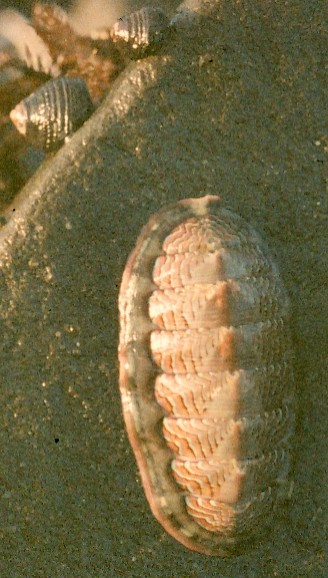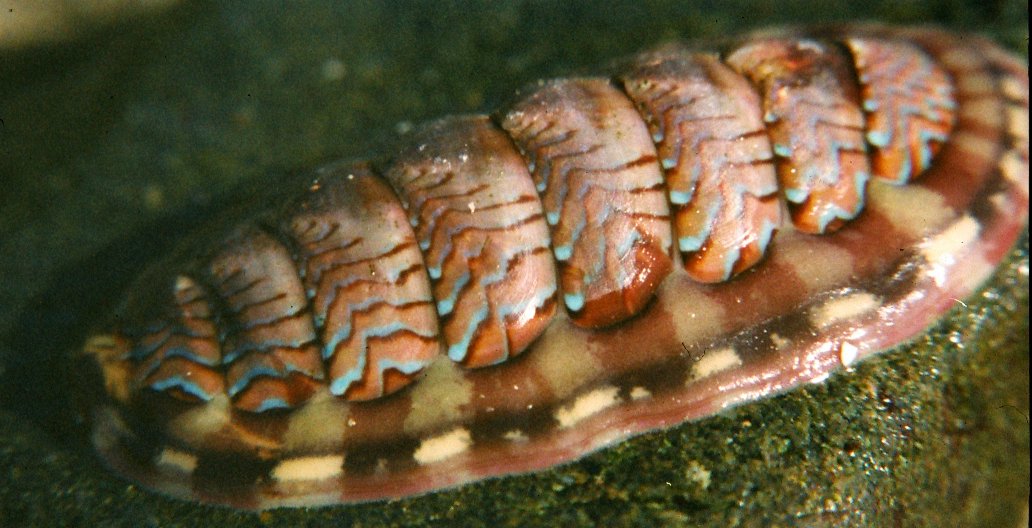Tonicella lineata (Wood, 1815)Common name(s): Lined chiton |
|
| Synonyms: See note below on Tonicella undocaerulea |  |
| Phylum
Mollusca
Class Polyplacophora Order Neoloricata Suborder Chitonina Family Lepidochitonidae |
|
| Tonicella lineata, San Simeon, CA. About 2 cm long | |
| (Photo by: Dave Cowles, 1995) | |
How to Distinguish from Similar Species: No other local chiton species has this coloration on the plates.
Geographical Range: Aleutian Islands to San Miguel Island, CA, Sea of Okhotsk, northern Japan
Depth Range: Low intertidal and subtidal.
Habitat: Rocks covered with coralline algae.
Biology/Natural History:_Feeds on coralline algae. Often is found living under the purple urchin Strongylocentrotus purpuratus or in urchin burrows in the rock. This species may home. Predators include Pisaster ochraceous and Leptasterias hexactis, at least in some regions. Eggs are released in April in CA and OR, but in June in the San Juan Islands. Lays a stream of green eggs. Trochophore larva development stops after 150-160 hours, and will not resume unless the larva settles on coralline algae. Larvae metamorphose into juvenile chitons within 12 hours of settling.
Some workers identify the form with pink, blue, and red lines on the plates as T. undocaerulea and identify T. lineata as the form with pinkish valves and dark zigzag lines edged with white.
| Return to: | |||
| Main Page | Alphabetic Index | Systematic Index | Glossary |
References:
Dichotomous Keys:Kozloff 1987, 1996
Smith and Carlton, 1975
Flora and Fairbanks, 1966
General References:
Morris
et al., 1980
Kozloff,
1993
Niesen,
1994
O'Clair
and O'Clair, 1998
Scientific Articles:
General Notes and Observations: Locations, abundances, unusual behaviors:

This Tonicella lineata was under a rock, seen in early morning light.
Note the variation in plate color compared to above picture.
This would conform to the classic Tonicella lineata (see note above)
Photographed at San Simeon, CA by Dave Cowles. About 3-4 cm long.

Another individual. Dave Cowles, San Simeon, CA 4-97
Authors and Editors of Page:
Dave Cowles (2005): Created original page